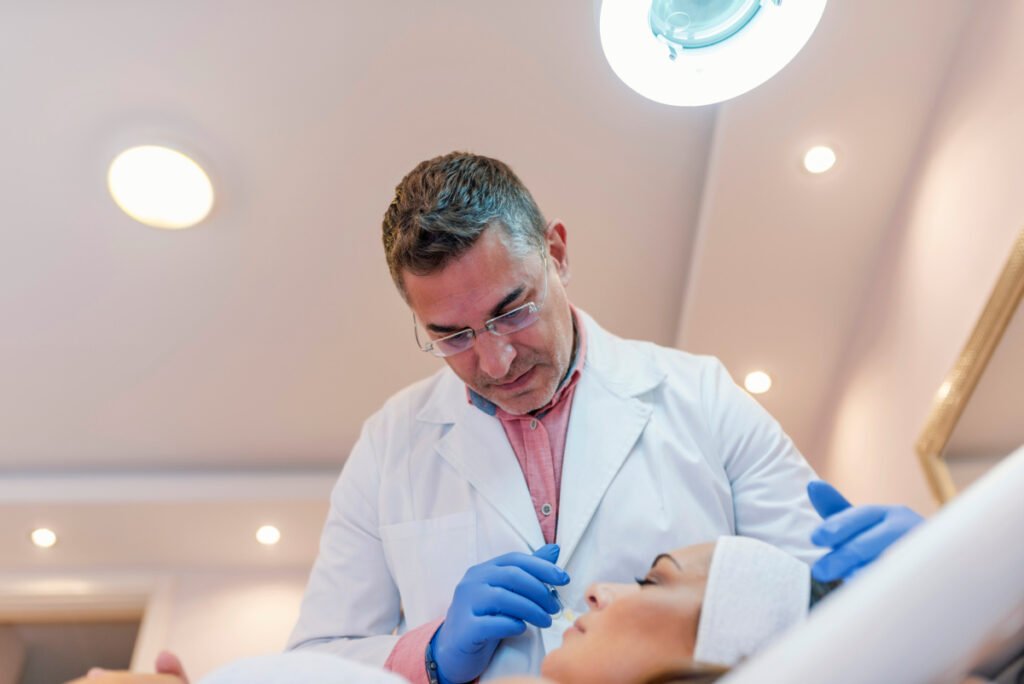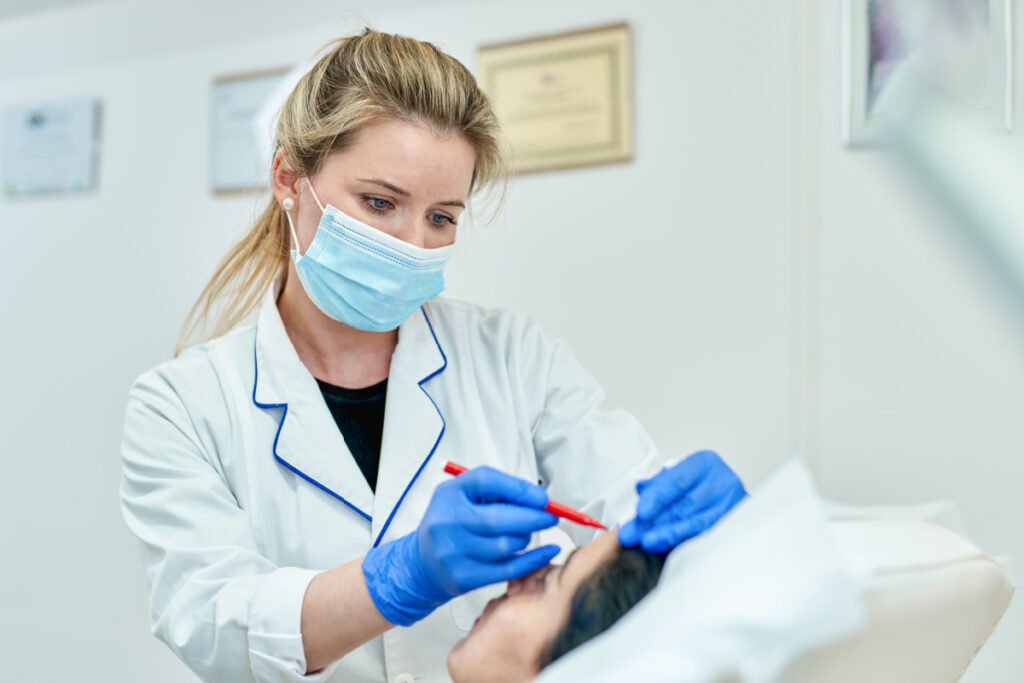How to Transition from Oral and Maxillofacial Surgery to Facial Cosmetic Surgery

As an oral and maxillofacial surgeon (OMFS), you have developed a keen surgical aptitude that often includes ensuring sound cosmetic outcomes for your patients. If you find that you have a passion for the cosmetic aspect of your work, you may be considering making a career transition to the facial cosmetic surgery specialty.
The American Board of Facial Cosmetic Surgery (ABFCS) facilitates this pathway for interested OMFS with both single and dual degrees. If you are planning this career change, here are 8 key steps that our board-certified facial cosmetic surgeons recommend.
1. Find out if you are suited to the career change
Take time to consider whether you are suited to the career change. While your experience as an OMFS has largely addressed patients’ more straightforward medical needs, cosmetic surgeons’ work involves finding procedure(s) that address patients’ more nuanced requests and requirements. To succeed as a facial cosmetic surgeon, you should both be happy to work with patients’ individual preferences and have a natural aesthetic ability; your patients’ goals become your puzzle to creatively address with cosmetic procedures and treatments.
Reach out to practicing cosmetic surgeons, read about the specialty, and look for opportunities to shadow fellow doctors where possible. Our blog and webpage for surgeons offer insights, and the American Academy of Cosmetic Surgery (AACS) also offers many educational resources and conferences. Surgeons considering fellowship training may also consider reaching out to facial cosmetic fellowship directors, whose contact information is listed on our fellowship webpage.
2. Acquire training, i.e. through a cosmetic fellowship
There are three routes by which an oral and maxillofacial surgeon may specialize their practice and become a board-certified facial cosmetic surgeon: (1) the experience route, (2) the AACS-certified fellowship route (1-2 years), or (3) an equivalent non-AACS fellowship. Surgeons wishing to take the experience route will need to ensure they have extensive and proper documentation of cosmetic surgery cases; those who either prefer fellowship training or require it to gain experience may read more about fellowship training programs here.
3. Update malpractice insurance ahead of your fellowship
Whether you plan to begin offering cosmetic enhancements or are entering an AACS-certified facial cosmetic fellowship, update your malpractice insurance to reflect your change in practice. Cosmetic surgery fellows are also required to obtain an unrestricted medical license in the state where the fellowship is offered. (Fellowships are offered at cosmetic practices across the country).
4. Pass board certification
After you have successfully completed a fellowship or collected evidence of proficiency in facial cosmetic surgery, as well as met other requirements, you may petition the American Board of Facial Cosmetic Surgery (ABFCS) for board certification. Both single- and dual-degree oral and maxillofacial surgeons are eligible. Review requirements and learn how to apply here.
- Related: Why join the ABFCS? »

5. Be sure your before-and-after photo setup is up to cosmetic medicine standards
More so than any other specialty, facial cosmetic surgeons rely on before and after photos of patients as a critical tool. You will use before and after photos to demonstrate your surgical ability to patients and to communicate with them about their desired results in consultations. You will also want to include some before and after photos (with patient consent) in your marketing materials.
The key to good before and after photos is consistency. Make sure you have your setup ready in advance so that you can build a unified portfolio of images that truly showcase your work. Here’s what you will need:
- A high-quality digital camera system that you and your staff have learned how to use with a standard focal length
- A tripod to maintain the camera in a consistent position
- A plain backdrop
- Excellent lighting sources (natural light and varied artificial light will make your photos appear inconsistent and less professional)
- Modesty garments for patients to wear when relevant
- Appropriate consent forms for patients to sign before photos are taken
With cosmetic procedures of the face, in particular, good before and after images require nuance and views from various angles. You will need to decide on a regular set of poses for each procedure, as well as establish and mark the distance patients will stand or sit from the camera—consistency in these areas is critical to creating a highly professional portfolio of images.
If space is tight, you may be unable to set up a dedicated “studio” space. You may place tape on the floor in a consultation or treatment room in front of a plain wall to demarcate the location of the camera and the patient to maintain consistency. Finally, test your setup with staff so that you can seamlessly integrate before and after photos into your pre-operative and follow-up patient appointments.
6. Retrain or hire staff to be sure your team is ready to serve cosmetic patients
Staffing needs at a cosmetic practice are somewhat different. Most cosmetic surgeons employ a knowledgeable, caring patient care coordinator to usher patients through their journey and answer questions that do not require a licensed medical professional. Your nursing and operating room staff must also be trained and prepared to handle cosmetic cases.
Be sure not to overlook the importance of training your front desk staff in serving aesthetic patients; they will be the first voices that patients hear when considering you for their cosmetic procedure. An experienced cosmetic practice consultant can offer detailed advice on handling patient inquiries and receiving patients in the office; applying these principles can notably increase consultation to surgery conversion rates.
Be sure not to overlook the importance of training your front desk staff in serving aesthetic patients.
7. Make sure your office space appeals to aesthetic patients
A key difference between aesthetic patients and those you will see for functional procedures is that they have a choice in who performs their surgery. Entering a comfortable, appealing, and professional-looking space helps patients feel valuable and cared for, and can help them trust that you will listen to their needs and achieve ideal results for them.
8. Retool your marketing to be geared towards cosmetic procedures
Be sure your marketing gives patients an accurate representation of the procedures you offer. As most patients are in search of a specialist, you will only attract new cosmetic patients if it is clear that your focus is on cosmetic medicine and are highly capable of delivering attractive results. Outdated or low-quality websites, Google listings, poor quality patient photos, or association with past practice names may cast doubt in a patient’s mind about your level of dedication to facial cosmetic surgery.
Learn more about specializing in facial cosmetic surgery
If you are an oral and maxillofacial surgeon with ample evidence of facial cosmetic surgery experience, you may qualify to petition the American Board of Facial Cosmetic Surgery (ABFCS) for board certification through the experience route. Learn more about board certification here »
Facial cosmetic surgery fellowship for oral and maxillofacial surgeons (OMFS)
If you are an oral and maxillofacial surgeon looking for fellowship training that will challenge you, refine your aesthetic skills, and offer experience in the full range of cosmetic procedures that are not typically performed by OMFS, then look no further than the AACS-certified facial cosmetic fellowship. This fellowship also qualifies you to petition the ABFCS for board certification. Learn more about the AACS-certified fellowship here »